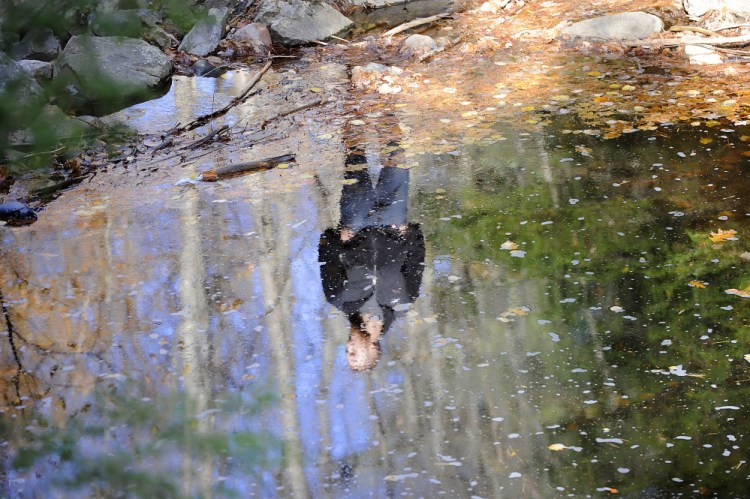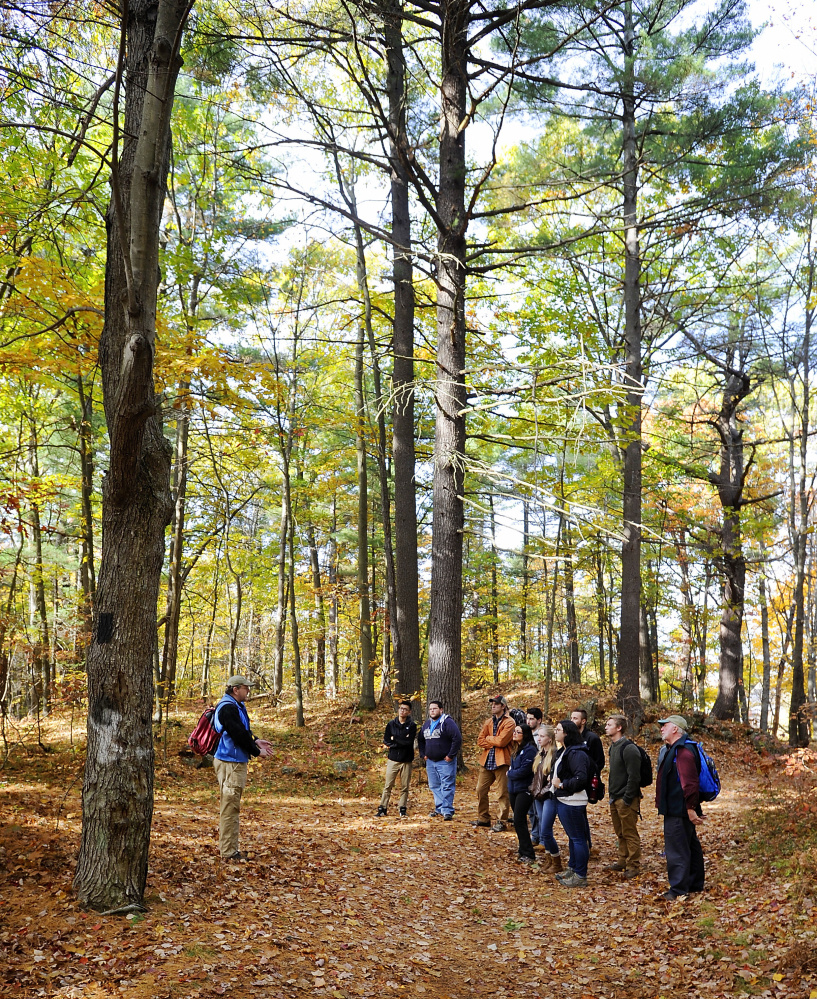BIDDEFORD — Joshua Barr wasn’t certain what he wanted to study at the University of New England. Then he took a class in his sophomore year that turned him on to the field of conservation. He did an internship the following summer at a state park in Alaska, and now he plans to become a natural resource manager.
Emily Green had the same experience. Green, who grew up in Sanford, had never considered the work that goes into managing conservation lands in southern Maine – or even that such preserves existed. She first learned about them in a nature writing class at UNE.
“I started thinking I would go into a medical field. Then I realized I wanted to help people in a different way,” said Green, a senior. “Since I came to UNE and took these conservation classes, the environment has become a really big part of my life.”
Similar stories came from other students in Dr. Owen Grumbling’s conservation practicum class as Maine Coast Heritage Trust project manager Keith Fletcher led them through Biddeford’s Clifford Park.
“It definitely opened my eyes to paths that existed,” said senior Shawn Nguyen.
The advanced field-lab class is one of the few of its kind in Maine, said Grumbling, a UNE professor of 40 years who created the school’s Environmental Studies Department,
Earlier this year, Grumbling received Heritage Trust’s highest award for conservation work. He also has received the New England EPA’s lifetime achievement award.
“In my lifetime, I’ve seen a commitment to conservation go from people wanting to prevent development running amok and setting land aside in the 1970s, to communities considering that people simply need to spend time in nature for solitude and peace,” Grumbling said.
Clifford Park is 150-acre patch of pure wilderness in the belly of Biddeford’s low-income neighborhoods. Grumbling calls it a gem.
“A section of the park was going to be sold for development. So the city and Maine Coast Heritage Trust got together (to preserve it),” Fletcher explained to the class.
Such stories of threatened wild land and the work needed to save it resonate with students.
When Grumbling offered two choices for their final field trip of the semester – either a visit to Portland’s urban trail system or a hike through the university’s protected forest – Green proposed a third choice that many in the class cheered. She suggested they visit Grumbling’s home, where 150 acres around Little Ell Pond in Wells has been protected by their professor and others.
“Every place we’ve gone in this class is sacred,” Green said. “One reason I’m excited to go to Owen’s sanctuary is it’s part of his life, part of his life’s work.”
And yet Green thinks some of her peers are unaware of Maine’s wild areas, just as she once was. It’s a concern Nguyen shares.
“Most land managers we’ve met through this class have expressed a concern in the next generation of conservationists. They worry their kids and grandkids won’t do the work they’re doing,” said Nguyen, 21, of Saugus, Massachusetts.
“It’s an understandable concern if nobody takes care of this land. It’s definitely a job to manage it. I was aware of these preserves, but I never gave too much thought to what that takes (to manage them).”
Send questions/comments to the editors.




